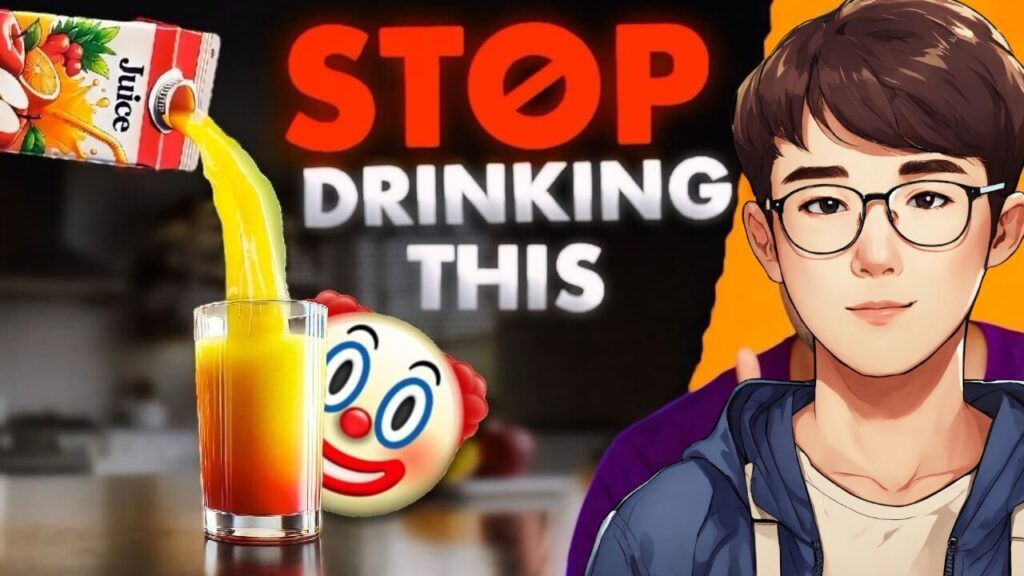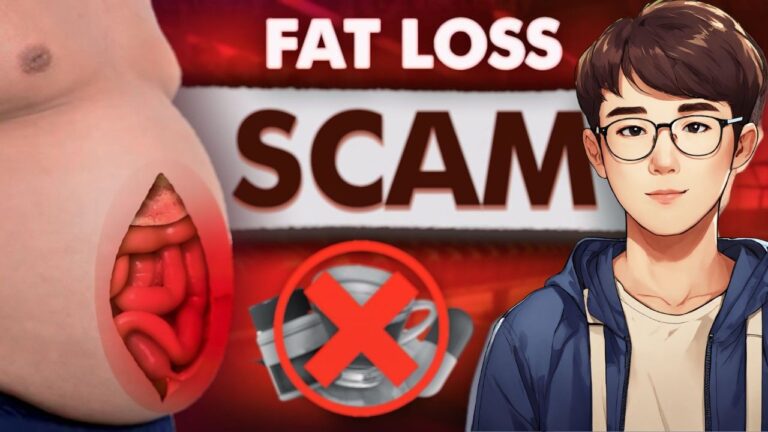Reality of Fruit Juices | Dhruv Rathee
Hello, friends! Cold drinks like Pepsi and Cola aren’t good for our health; all of us know this by now. But often, as their alternative, people suggest that you should drink fruit juice as it’s healthy.

Even the companies making these fruit juices market their products like this—a healthy drink to boost your immunity, full of minerals and vitamins, the small tetra pack filled with nutrition for your child. This is largely marketed toward children. So, friends, how would you feel if I told you that these packaged fruit juices, in some aspects, are as bad for your health as these soft drinks like Cola? Come, in today’s blog, let us understand this better.
Let’s start with fruits, friends. Are fruits good for our health? Absolutely. There’s no doubt about it. Fruits are an important part of our daily diets. They are rich in vitamins and minerals, high in fiber, and have antioxidants as well. Antioxidants help in preventing cancer and heart diseases. Additionally, you’ll find flavonoids in fruits, a type of plant pigment. Research shows that consuming these improves mood as well. Apart from this, numerous research papers tell us that fruits reduce the risk of heart disease, cancer, depression, and diabetes.
But on the other hand, research papers paint packaged fruit juices in another light. A meta-analysis of 4 studies covering approximately 200,000 participants revealed that drinking fruit juices increases the risk of Type 2 Diabetes. How could this be? Friends, to understand this, we need to understand the history of fruit juices. So come, let’s travel to the past and check out the development of fruit juices.
Humans have been consuming fruit juices for so long that you will find its mention even in Ayurveda. Ayurveda states that if you are tired and want to get rid of the fatigue, you need to drink fresh orange juice with a pinch of rock salt in it. The word ‘Ritucharya’ mentioned in Ayurveda means changing one’s lifestyle with the season. During the summer, it is recommended to drink fruit juices such as mango juice. You will find the mention of similar fruit juices in the Old Testament of the Bible.
If grape juice is left untouched for a long time, it ferments and turns into wine. In the Old Testament, we see wine and grape juice mentioned separately. In Chapter 6, verses 2-3, God tells Prophet Moses that if any man or woman from Israel wants to make a Nazirite vow, i.e., to dedicate themselves to God for a while, they should not drink wine. In fact, any fermented drink. Even vinegar made of wine, grape juices, not even grapes and raisins. Wine, vinegar, and grape juice had distinct Hebrew names: Yayin, Chomets, and Mishrah. Around the Dead Sea near Jordan, ancient manuscripts written in Hebrew were discovered. Dating them revealed that they were written in 150 BC. Those contained mentions of pomegranate juice.
Interestingly, friends, the history of fruit juice is somewhat similar to the history of ice cream. We have enough archaeological evidence to suggest that people from ancient China, Iran, Rome, Greece, and Egypt often sweetened ice or snow using honey or fruit juices. Alexander the Great is said to have been addicted to such ice creams. But during these times, fruit juices meant fresh fruit juices. Fast forwarding to around the 1750s, the first case of preserving fruit juices took place.
Friends, the English sailors of this time, who undertook long voyages, were often faced with a disease known as Scurvy. Scurvy is caused by a Vitamin C deficiency. This was around 180 years before the discovery of Vitamin C. But Dr. James Lind’s experiments found that scurvy can be prevented by having oranges and lemons. So the royal navy of England mandated that the sailors be provided with lime juice and lemon juice. But the problem was preserving the juices. They were spoilt during the months-long voyages. Someone noticed that the fruit juices could be preserved by adding rum, water, and sugar to it. Friends, this combination of fruit juice, rum, water, and sugar is a popular cocktail that you can find even today, known as Daiquiri.
Later, in 1867, a man named Lochlan Rose realized that to preserve the fruit juice, rum and water weren’t actually needed. Sugar alone could do it well. Friends, this was the discovery of the world’s first commercial fruit concentrate—fruit juice being preserved by adding sugar. The first branded bottled juice was sold soon after. Lochlan Rose set up his factory and produced Rose Lime Juice for the sailors on ships. It was bottled and labelled attractively as medicine for the sailors.
Around this time, there was another man in America, Thomas Welch, a preacher at church. Unlike Muslims, Christians and Jews do not consider drinking wine sinful. In fact, bread and wine are part of their rituals. But Thomas Welch began an alternative movement. He told his flock that they should stop drinking alcohol. Alcohol consumption is harmful to health. In a latest research, it was shown that even small quantities of alcohol are not beneficial to one’s health. Many countries had issued guidelines earlier that drinking a glass of wine daily is good for health. But many of these countries have updated their guidelines. Look at this article. According to Canadian guidelines, even in smaller amounts, alcohol is not healthy for you.
On the topic of updates, the biggest update of my ChatGPT Course is now live. Two hours of new lessons have now been added. The total course is now 8.5 hours long. The update discusses new features of ChatGPT and Artificial Intelligence. In addition to ChatGPT, I’ve now included AI software like Preplexity.ai in this course. The new lessons will teach you how to create your custom GPTs, and use ChatGPT for research and IT tasks. And the best part is, those of you who have already purchased this course will get this update completely free of cost.
And if you haven’t, do check it out. It’s a course on comprehensive AI chatbots. After taking this course, your productivity and efficiency, while doing your school work, your job, or household chores, will increase manifold. On the screen, you can see the overwhelming response of the people who’ve completed this course. You will learn things that you can’t even imagine yet. There’s a special coupon code for the first 1,000 people to sign up now: R41. You’ll get 41% off with this. The link is in the description below, or you can scan this QR code. You should go check it out.
Getting back to Thomas Welch, Thomas told the Christians to stop drinking wine and replace it with his unfermented wine—basically, grape juice. Several churches agreed with Thomas, and a Non-Alcoholic Community of Christians was formed. In fact, even outside the Christian community, some Americans greatly enjoyed grape juice. This is why the place where Thomas Welch lived, Westfield, is now known as the Grape Juice Capital of the world. The American fruit juice industry started from here. Thomas Welch started using a new method of preserving the fruit juices longer. This new method was Pasteurization. You’ve studied about it in school. We pasteurize milk as well. It basically means using heat to kill bacteria and viruses.
Apart from grape juice, orange juice was pasteurized as well. Farmers growing oranges saw that if the supply was too high without sufficient space for storing them, they could simply make juice out of the excess oranges, and pasteurize it in order to be able to store it for a long time. At this point in time, the packaged fruit juice business was doing better than the fresh fruit juice business. And then, came an invention in our story that promoted fresh fruit juices. Raw foods advocate, Norman Walker, invented the first juicer.
For the first time, a machine was created to first grate fruits and vegetables, squeeze them, with fresh fruit juice being poured out. This was the early 1900s. Norman went to California and started his juice bar. All his life he promoted raw fresh foods and fresh juices. He wrote 12 books and lived until 99 years of age. It is important to mention this because back then, such a long life wasn’t common, and perhaps, his healthy lifestyle can be credited for it.
Moving on, in the late 1950s, the first grinding juicer was invented, known as the Champion Juicer. After that came the centrifugal juicers. After these inventions, the machines for extracting fruit juices became even more compact, convenient, and affordable. But simultaneously, the packaged fruit juice business grew faster. Especially after the 1960s, when Tetra Pak introduced tetra brick. Today, packaged fruit juices are being sold in tetra packs with an expiry date of months. They can be transported across hundreds of kilometers and across international borders.
Now, the most important question that arises is what is inside these tetra packs? Let me tell you the truth about these tetra packs. Most tetra packs contain water, about 10% fruit juice concentrate, and added sugar. To make the fruit juice concentrate, friends, fresh fruit juice is first heated until the water in it evaporates. As a result, only a thick syrup remains. The fruit juice concentrate. This concentrate can be stored for longer durations, but it lacks most nutrients. Then, artificial flavours and colours are added to give it the look and taste of fresh juice. All this is mixed with water and sugar before being sold to us. If you look at the sugar content, about 13.5g of sugar is found per 100 ml.
So friends, this is the biggest reason why drinking packaged fruit juices regularly increases the risk of Type 2 diabetes. Companies are directly responsible for this, as they add extra sugar to their products. If a child drinks just one 180 ml packet of such juice, they consume more than half of their recommended daily sugar intake. It’s clear that these juices, marketed as healthy, are far from it.
In 2011, Angelina Lewis in California filed a case against Tropicana for deceptive advertising. The company marketed their juice as fresh, natural orange juice, but the product was actually manufactured in laboratories. Although she lost the case on technical grounds, the battle highlighted the misleading nature of such advertisements. Even if courts struggle with technicalities, it’s clear to me that fresh fruit juice is far superior.
In 2017, a French journalist, Christophe Brusset, wrote a book revealing how the food industry deceives consumers. He worked in the food industry for over 20 years and saw how various tricks were played. In his book, “You Don’t Know What You’re Eating,” Brusset describes how fruit juice companies create a “flavor pack” to give the impression of fresh juice. Essentially, during the process of concentrating juice, much of the flavor is lost. So, to give back the lost taste, a separate artificial flavor pack is added to the juice concentrate before packaging. As a result, we are not really drinking fresh juice but rather a chemically manipulated drink.
So, friends, the next time you see an advertisement claiming “100% pure fruit juice” or “no added sugar,” remember that these packaged fruit juices are not the same as freshly squeezed juice. The truth is that most of these packaged fruit juices have added sugar or chemicals in some form, whether in the concentrate or the flavor packs. Even if some brands do not explicitly add sugar, they use artificial sweeteners that may have their own negative health impacts.
In 2018, a class-action lawsuit was filed against the Coca-Cola Company in the United States for falsely advertising its Minute Maid Premium Orange Juice as “100% pure” and “not from concentrate.” The plaintiffs argued that this was misleading because the juice was heavily processed, stored for up to a year, and required the addition of flavor packs to make it palatable again. Although the case did not result in an immediate win for the consumers, it did raise public awareness about the deceptive marketing practices of these companies.
Let’s also talk about the packaging material, friends. The Tetra Pak, commonly used for these fruit juices, is often made up of layers of paper, plastic, and aluminum. Although Tetra Pak claims that their packaging is recyclable, only a small percentage of it is actually recycled due to the difficulty in separating these layers. The rest usually ends up in landfills, adding to the environmental damage. Moreover, some studies have shown that these packs may leach harmful chemicals, like phthalates, into the juice, especially if exposed to high temperatures. So, not only are these juices unhealthy for you, but they also contribute to environmental pollution.
Friends, I know you must be thinking, “If packaged fruit juices are so bad, why do people still consume them?” The answer is simple: convenience and aggressive marketing. The juice companies have huge advertising budgets to market their products as healthy alternatives. They show beautiful, healthy-looking people drinking their juices in exotic locations, while fresh fruits are conveniently squeezed to show that their juice is made from the best ingredients. But what they don’t show is the actual process of making the juice, the chemicals added, or the environmental damage their packaging causes.
And then, there is the issue of busy lifestyles. Many people find it more convenient to buy a ready-to-drink juice pack rather than taking the time to squeeze fresh juice themselves. But remember, friends, convenience often comes at a cost. You may save a few minutes, but you are compromising your health in the long run.
Now, what can we do about it? The answer is simple: switch to freshly squeezed juices or eat whole fruits. Whole fruits contain fiber, which is lost in most fruit juices, even fresh ones. Fiber is essential for a healthy digestive system and helps regulate blood sugar levels. When you eat a whole fruit, the sugar is absorbed slowly, and your body has time to process it. But when you drink juice, especially packaged juice, the sugar enters your bloodstream quickly, leading to a spike in blood sugar levels.
If you still prefer drinking juice, then invest in a good quality juicer and make it fresh at home. Use a variety of fruits and vegetables, and avoid adding extra sugar. You will find that fresh juice tastes much better, and you can control the ingredients.
I hope that after reading this blog, you will think twice before buying packaged fruit juices. Remember, the power to change is in your hands. It is our collective actions that can push these companies to change their ways. When we choose fresh fruits or make our own juice, we send a clear message to the industry that we value our health and the environment more than convenience or clever marketing.
Thank you for reading, friends! If you liked this article, please share it with your family and friends so that they, too, can know the truth about packaged fruit juices. Don’t forget to subscribe to my blog.
Stay healthy, stay aware!





